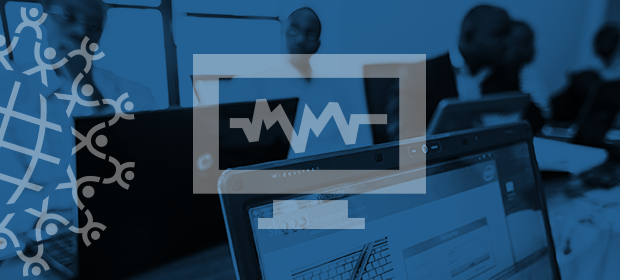Where We Work
See our interactive map


On Saturday, November 7, the World Health Organization declared Sierra Leone Ebola-free. Hundreds flooded the streets of Freetown to celebrate and pay tribute to those whose lives were lost during the outbreak. I read about the celebrations online with joy and happiness—they’d finally made it. I could almost hear the drums playing from North Carolina.
Over the past year during my travels to Freetown, I’ve observed the struggles and hardships Ebola has caused for Sierra Leoneans. Minor inconveniences such as curfews and routine traffic stops are coupled with grief over lost family members and constant fear of infection.It has been a long, hard fight.
There is the business of recovery, but there is also the human side.
Many of my friends and colleagues in international development have worked endless hours over the past two years to help control the outbreak. During my last trip in September, everyone was noticeably tired and ready to move forward, to find normalcy again.
Recovery Is More than a Buzzword
In July, Sierra Leone’s president launched a two-year National Ebola Recovery Strategy to help the country get back on track and realize the social and economic gains that were all but erased by Ebola. The country was just finding its footing as it recovered from more than a decade of civil war when Ebola significantly set it back.The first nine months of the plan focus on restoring basic access to health care, getting kids back to school, social protection, and restoring growth through the private sector and agriculture. So much of the work I’ve observed of the government and implementing partners right now is focused on these crucial nine months.
Recovery is more than a buzzword for Sierra Leone and the other Ebola-affected countries. It’s a new way of life.
During my travels to Sierra Leone, I’ve talked to a lot of people about what recovery looks like. There is the business of recovery—reviving the economy and restoring investments in the country. But there is also the human side. What kind of stigma are Ebola survivors facing? How are families coping with the loss of their loved ones? What kinds of chronic health conditions may survivors face and where can they seek treatment? What kind of posttraumatic stress will children have, especially those orphaned by the disease? And what kind of support is there for the health workers who have been battling Ebola on the front lines, where many also contracted the virus?
mHero connects health workers to health officials, to each other, and to critical information.
We don’t have clear or easy answers to these questions. But there are solutions and a bevy of committed stakeholders eager to help Sierra Leone recover.
Stronger Health Systems and Communication through mHero
For well over a year, I have been working with global stakeholders to develop and implement such a solution—a mobile phone-based system called mHero. Through the Ebola Grand Challenge, IntraHealth International is already putting mHero into action in Liberia and Guinea, where it’s connecting health workers to health officials, to each other, and to critical information that can save lives.
Now USAID is investing to introduce the platform in Sierra Leone, too.
In addition to introducing mHero there with our partner UNICEF, we are working alongside multiple levels of the Ministry of Health and Sanitation and other global partners to scale iHRIS (IntraHealth’s open source software for managing health workforce information), to build informatics capacity at the ministry, and to improve health information system interoperability. These investments align with the president’s recovery strategy to improve data collection and sharing.
Leaders in Sierra Leone are ready for mHero—and ready to take the next steps in health systems strengthening. They know that the value of health information systems during the outbreak was limited by the timeliness, completeness, and quality of their data. So now leaders seek to engineer something more robust and responsive for the future.
Through my discussions with them about iHRIS and mHero, their visions for improved information are clear. As we scale mHero, I’m optimistic they will harness this technology and find innovative ways to use it to better support frontline health workers.
The Survivors
As Sierra Leone enters this new “Ebola-free” phase, I’ve been thinking about the survivors—up to 4,000 of them in Sierra Leone alone.
During my last trip to Freetown, I learned of a woman—an Ebola survivor who lost her husband but still had a young family to care for—who needed treatment for high blood pressure. She was given money by the government to travel the two hours to Freetown to see a specialist, but after several trips to seek care, she was denied services, most likely because of the stigma she faces as a survivor. She eventually did get the treatment she needed. But for her and all of Sierra Leone, this road to recovery is filled with unexpected roadblocks.
I am very hopeful that over the next few months, our support to the ministry through iHRIS, mHero, and informatics capacity-building will lay a solid foundation for the country to construct and own a state-of-the-art health information system. It will be a celebration in the streets once again.
IntraHealth’s work in Sierra Leone is funded by USAID.
Get the latest updates from the blog and eNews




